It may have taken David Attenborough's Blue Planet film to bring it to greater public attention, but the serious environmental hazard of plastic waste has been growing for decades. It has now reached the point at which it is literally strangling wildlife and poisoning the environment, and the global construction industry, alongside many others, is partly to blame.
While it's unfair to curse all plastics since their use in many industries (including aspects of construction and building works) has proved beneficial, the excessive waste of damaging plastics on construction sites contributes to the wider global problem of plastic’s corrosive impact on the environment.
It's not as if we are unaware of the problem, and some steps have been taken in many industries to try and address the problem. For example, it is several years now since UK supermarkets and larger shops were compelled by law to charge for plastic carrier bags, a measure which reduced the number of bags sold by 95%. Quite apart from the practical benefits of this reduction, the implementation of the charge went a considerable way to educating the public about the dangers of plastic waste. While in many ways, the ban hasn’t gone far enough, simply focusing attention on the issue has at least brought it to life in the minds of consumers.
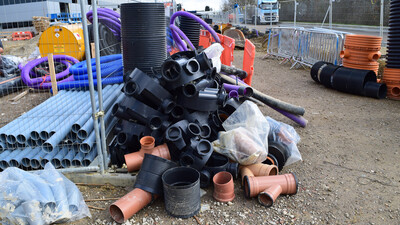
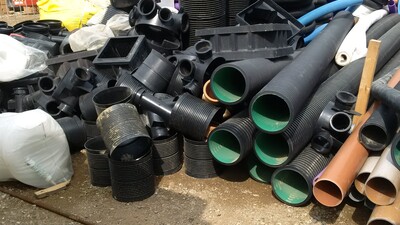

SiteStak’s Snapshot Study: The Extent of the UK Construction’s Plastic Waste Problem
Nevertheless, plastic packaging in the UK construction industry is a greater problem than ever before, as our recent snapshot analysis of government data reveals. We evaluated the latest data released by the Department for Environment, Food and Rural Affairs (DEFRA) and have found that:
- Far from presiding over a reduction in plastic waste, over the last two years, the UK construction industry has actually increased its plastic waste output by 45.72%
- Even more concerning, plastic waste from UK construction companies increased 69.84% in four years to 98,284 tonnes in 2018
- At the same time, plastic waste in the UK as a whole fell by a modest but welcome 2.68%
- Total wastage of all materials from the construction industry also increased 2.23% in the same four-year period
- The construction industry ranks second only to the packaging industry itself as a producer of waste plastic, generating a significant proportion of the 3.7 million tonnes discarded in the country as a whole, destined for landfill, other countries or of course the ocean
China, roundly condemned for its increasing use of polluting fossil fuels, used to be one of the destinations to which the UK would send its waste plastic for recycling, but even that industrial giant decided enough was enough and refused to accept plastic that was not 99.5% pure. As a result, the amount of plastic waste we were able to send to the other side of the world fell by 94%.
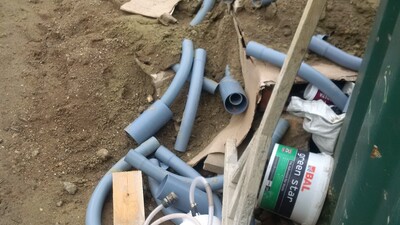
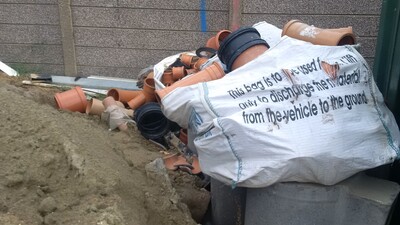

What’s Driving Plastic Waste in UK Construction?
The problem of plastic waste from UK construction is multifaceted, with many levers and drivers impacting output. However, some of the causes of plastic waste from businesses in the building trade emanate from mismanagement on building sites or in production, the prominence of single use plastics and the pace of industry growth.
WASTAGE AND MISMANAGEMENT ON CONSTRUCTION SITES
One of the biggest creators of excess plastic waste from UK construction companies comes in the form of inefficiencies on building sites. This is often driven by several factors, including:
- Plastic materials mislaid in production or on chaotic or disorganised building sites
- Over ordering of plastic materials
- Irresponsible generation of offcuts from construction work
- Misuse of plastics or mistakes made during construction
- Loss and theft of materials
Most of these issues emanate from the poor management and coordination of materials and supplies in production facilities or on building sites. That’s why our SiteStak materials management system has been specifically designed to change how groundworkers operate, by better facilitating stock control, organisation and the movement of underground drainage and building supplies.
A GROWING UK CONSTRUCTION SECTOR
Although the pandemic and the global supply chain have recently presented serious challenges, UK construction output has generally grown at a steady rate over the last decade. Despite these obstacles, the industry is expected to grow by 10.6% in 2021 and by around 3% between 2022 and 2025. This growth means that without a strategy or incentive to reduce plastic waste, the incidences of non-biodegradable plastic going into landfill, or the sea will rise.
SINGLE-USE PLASTICS
Another difficulty is that the industry relies on plastic for the packaging of its materials. It is extremely durable and resilient, providing the perfect protection for valuable goods when in transit, in storage or on-site. Until now there has not been any appreciable commitment from the government or industry at large to help find viable alternatives or implement legislation to tackle the issue of single-use plastics. The issue of plastic waste still often falls under the banner of corporate social responsibility rather than business strategy.
What’s Being Done About Plastics in UK Construction?
Plastic as a part of the construction process can play an extremely valuable role, but it is the material which gets discarded that causes the trouble: much of it can't easily be reused nor is it biodegradable. That said there are some encouraging signs not just of an emerging willingness to address the issue but also of effective measures.
The major real estate company Canary Wharf Group, for example, has made a commitment to becoming the world's first 'plastic-free commercial centre' by helping local retailers and businesses to find alternatives to single-use plastics. Similarly, the contractor Mace was inspired to launch an initiative to reduce its use of disposable plastic not by commercial or regulatory pressures but because its executives came to realise how important the issue was to its employees. And from employees to consumers is a very short journey, so Mace decided to stay ahead and in control of the message.
What are the Solutions to Plastic Waste in Construction?
Plastic waste in the office environment is comparatively simple to eliminate, but on the construction site, it is a great deal more challenging. Minor measures such as finding alternatives for the shoe-coverings worn on fit-out sites and the separation of waste are well worth pursuing but barely scratch the surface. Tackling the issue head-on is likely to involve a complete revision of the procurement process, with suppliers and specifiers working together to reduce plastic consumption on building sites and through plastic packaging.
However, simply waving a big stick may not be the most productive approach. Site management solutions like SiteStak go a long way to minimising incidences or loss, theft and mistakes which lead to waste – however grounds people still need to take responsibility for using them and the responsible ordering of materials. Likewise, creative solutions are needed for things like void fillers, additional shrink wrapping and extra protective strapping - otherwise, the safe transport of high-value construction materials will need to continue relying on the use of plastic wrapping. A collaborative effort between construction companies, suppliers and government to find acceptable alternatives by consulting, experimenting and sharing innovative ideas is needed.
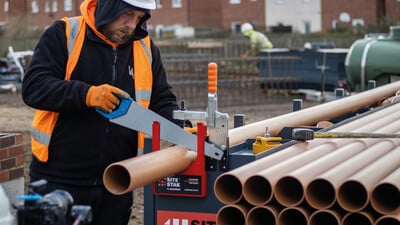
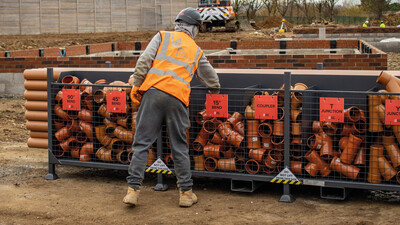
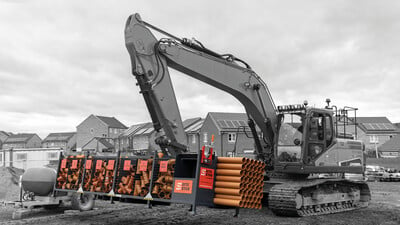
Recyclable plastic is obviously a very helpful option, but for operational reasons, this isn't always suitable. However, re-use is a perfectly feasible practice: for example, removing polystyrene padding as goods are unpacked and then returning the padding to be used again on the next load and the one after that. Increasingly, it is also possible to use recycled plastic as a construction material. Experiments have demonstrated its effectiveness in road resurfacing as well as the manufacture of other construction products.
More radical changes might also be considered, such as the expansion of pre-fabrication, facilitated by the increasing popularity of modular construction. This is one way of ensuring that only the energy and materials needed to build the structure are used thereby minimising energy consumption and waste. Architects and designers too can make a substantial difference by addressing waste concerns at the design stage and devising not just an eco-friendly finished project but a low-waste, sustainable route to creating it.
Many of these solutions will require training and investment but if the will is there, what was once thought impossible or not even worth thinking about, can be achieved.

Written by
Mark Chambers
Marketing Manager
As Marketing Manager, Mark plays an active role in running strategic projects to increase our brand profile.

